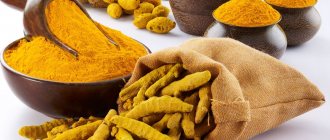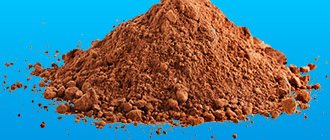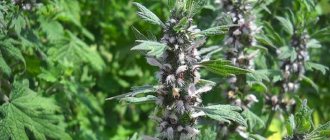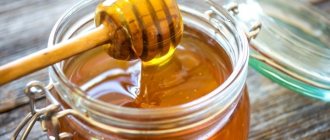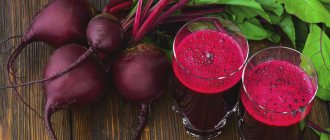Green tea is a popular plant-based drink. Green tea increases or decreases blood pressure, the properties depend on the type of plant from which it is prepared, the brewing method, and the individual characteristics of the person. Tea bags from the store are of no use, since they do not contain real herbs or flowers. A freshly brewed herbal drink, cold or hot, will bring benefits. For hypertension, doctors recommend abstaining from strong tea or coffee, but there are options for your favorite drink that you can drink to normalize blood pressure.
Green tea against blood pressure. The effect of green tea on blood pressure
Green tea affects blood pressure differently depending on the frequency of consumption and the strength of the drink.
There are several conflicting studies on the effects of green tea on high blood pressure. Thus, in China, data were obtained that drinking 120–600 ml of green tea daily is associated with a lower risk of developing hypertension. In people who already have signs of hypertension, drinking green tea three times a day for a month reduces high blood pressure - systolic by 3.32 mm Hg, diastolic by 3.4 mm Hg.
Several smaller studies have shown that black and green tea have no effect on high blood pressure.
The drink is more beneficial for low blood pressure. Its effect is especially pronounced in older people who are prone to lower blood pressure levels after eating.
Tea with lemon
Hot green tea with lemon is a pleasant and healthy drink. It is one of the traditional medicines for hypertension. It is effective to add both lemon pulp and zest. Green tea increases blood pressure, so it should not be strong.
Everything is explained by the properties of the drink to strengthen blood vessels (in moderation). Lemon is also very rich in vitamins and microelements. These are vitamins C, P, D, A, group B (1, 2, 5, 6, 9), and also fluorine, phosphorus, magnesium, sodium, potassium. In view of this, lemon also improves the condition of blood vessels. This composition of substances will help reduce the amount of cholesterol and reduce the level of blood viscosity. These properties will help lower blood pressure, as this improves the functioning of the cardiovascular system. In addition, tea with lemon increases the body's defenses.
What is the difference between black tea and green tea
Black and green tea are obtained from the upper buds and leaves of the same plant. The difference between them is in the processing processes. To produce green tea, the leaves are collected, dried, and then heated by steaming (in the Japanese tradition) or roasting (in China). This process stops oxidation so the leaves retain their color and flavor.
During the production of black tea, the leaves are compressed, curled, and undergo fermentation and oxidation processes. As a result, they darken and acquire a more intense odor.
Differences between black and green tea:
- Amount of caffeine
The caffeine content may vary depending on the variety and method of processing of raw materials. Typically, one cup of green tea contains 24 to 40 mg of caffeine, and one cup of black tea contains 14 to 61 mg.
- Antioxidant content
Both drinks contain antioxidants, which are essential for preventing cancer and other diseases. Different processing methods are the reason that black and green tea have different compositions, but equally useful substances with antioxidant properties.
What tea is good to drink for hypotension?
People suffering from hypotension can drink any type of tea, but they must follow the moderation and brewing rules.
Green tea
Reduces the risk of developing cardiovascular diseases, improves blood vessels and metabolism. It tones well and enriches the body with vitamins. To improve performance, it is recommended to drink in the first half of the day.
The properties depend on the duration of brewing: concentrated green tea increases blood pressure due to the high content of tannins, caffeine, and tannins. Therefore, it is recommended for hypotensive patients to brew the leaves for 5-7 minutes, and for hypertensive patients no longer than 3 minutes. Add 2 tsp to 500 ml of boiling water. tea leaves
To enhance properties, improve tone and performance, green tea leaves can be brewed with ginger and jasmine flowers. Add 1 tsp to 300 ml of water. additional ingredient.
Black tea
Improves cerebral circulation, tones, supports performance, cleanses blood vessels of cholesterol, removes toxins and waste. To increase pressure 2 tsp. pour 500 ml of boiling water over the tea leaves, leave for 10 minutes, drink warm. If you drink 2-3 cups of black tea every day, your blood pressure will increase by 3-5 mm Hg. Art. within 2-3 months.
At high blood pressure, the infusion time is reduced to 3 minutes. It is recommended to add herbs with a hypotensive effect: mint, sage, chamomile, lingonberry leaves, strawberries, cranberries.
Hibiscus
A drink made from hibiscus petals can be drunk by people with hypotension. It lowers blood pressure only in people suffering from hypertension. For low blood pressure, hibiscus is useful for its antioxidant and calming effect. Removes excess cholesterol, cleanses blood vessels, normalizes weight.
Classic cooking method: 1 tsp. pour a glass of boiling water over the raw material, leave for 5 minutes, drink warm. The hypertensive effect is noticeable after 2-3 weeks. The statement that eating hot hibiscus increases blood pressure and cold hibiscus lowers it has not been confirmed by scientific research.
Blooming Sally
Normalizes blood pressure, very useful for hypotensive and hypertensive patients: strengthens the heart, blood vessels, relieves nervous tension. Thanks to its rich chemical composition, it increases hemoglobin, improves metabolism, and relieves chronic fatigue syndrome.
To prepare tea for low blood pressure, 3 tbsp. l. dry raw materials are steamed with a glass of boiling water and left for 1.5-2 hours. You can add cold water, bring to a boil, simmer over low heat for no more than 10 minutes, and drink warm. Use in courses of one month, taking breaks for 14 days.
What properties does green tea have?
Green tea is not fermented; high temperatures are used during its production. This process helps preserve polyphenol molecules in the leaves and buds, which are responsible for many of the beneficial properties of this drink.
Polyphenols have the following properties:
- prevent inflammation, swelling and destruction of joint cartilage, protect against the progression of osteoarthritis;
- are active against the papilloma virus and can slow down the formation of abnormal cells on the surface of the cervix, that is, its dysplasia; the mechanism of this action is not yet clear.
Green tea contains from 2 to 4% caffeine, which has a positive effect on thinking and mental activity, stimulates the formation of urine, and also increases the speed of transmission of nerve impulses in Parkinson's disease. Caffeine stimulates the nervous system, heart, and muscle tissue by causing brain cells to release activating substances called neurotransmitters.
Antioxidants, which green tea is rich in, protect the inner surface of blood vessels (endothelium) and heart muscle from the effects of hypoxia and the effects of toxic substances.
Which green tea to choose
There are a huge number of varieties of green tea. There are more than 1000 of them in China alone. Of course, the question arises: how to choose high-quality green tea from such a rich list of varieties? - Let's give some advice.
1. It is better to choose green tea in specialized stores and shops, where sellers are usually more savvy, know the characteristics of each variety and will help you choose exactly the one that suits you best.
2. When choosing, be sure to pay attention to the presence of debris, broken petals and foreign objects in the tea. The latter should not be in the tea at all, and as for cuttings and broken leaves, they should be no more than 5% of the total mass. A larger quantity indicates that the tea was stored for a long time and probably incorrectly.
3. You should definitely pay attention to the color of the tea leaves, which, by the way, does not have to be green. It can be pistachio colored or bright green. However, in any case, green should dominate. If you see dark gray or brown leaves, this indicates low-quality tea, in particular, that it was not stored properly.
4. High-quality green tea should be moist (3 to 6% humidity), but not dry. Wet tea will retain more beneficial properties in its petals. Take the tea leaves and rub them in your hands. If they turn into dust, then it is a clear indication that the tea is overdried and has not been stored correctly and for a long time. It is not recommended to buy such tea, as it will have very few beneficial properties.
5. Also, do not take tea that is too wet (20%), as it can become moldy and become not only harmful, but also hazardous to health. This tea is easy to recognize. To do this, just open the filled box of tea and press the tea filled to the brim. If the tea is too wet, then the dent left by your hand will take a long time to fill, but if it heals quickly, then the tea is well dried and you can buy it.
As we have already said, it is very important to buy tea that has been stored correctly and in no case is old, since it only causes harm, because purines accumulate in it during long-term storage.
The benefits and harms of green tea for women and men
Green tea is useful for the following conditions and diseases:
- intense mental activity;
- non-alcoholic liver diseases, for example, fatty degeneration;
- inflammatory bowel diseases - ulcerative colitis and Crohn's disease;
- obesity, insulin resistance, diabetes;
- intestinal disorders, nausea, loose stools;
- headache;
- Parkinson's disease;
- chronic fatigue syndrome;
- dental caries;
- urolithiasis disease;
- skin diseases.
Green tea is useful for pathologies of the heart, blood vessels, and low blood pressure.
Many believe that drinking green tea is useful for the prevention of cancer of the breast, cervix, prostate, colon, lungs, liver, skin, and leukemia.
Green tea lotions and compresses help with sunburn, swelling under the eyes, and bleeding of the gum socket after tooth extraction. Baths made from this infusion help to avoid fungal diseases, such as mycosis of the feet.
Finally, green tea mouth and throat gargles are used to prevent colds and gum disease.
Green tea is safe when consumed occasionally. However, in high doses it can have harmful effects on the body due to the caffeine it contains:
- headache, irritability;
- insomnia;
- nausea and loose stools;
- interruptions in heart function;
- muscle tremors;
- heartburn;
- dizziness and tinnitus.
It is also likely that this drink reduces the absorption of iron from food, which is dangerous for anemia.
Green tea to normalize blood pressure: hot or cold
To increase blood pressure you need to drink hot tea. It should infuse for at least 8-10 minutes. This will increase the caffeine concentration in the drink. To lower blood pressure, you need to drink lukewarm green tea. You can insist on it for no more than 2 minutes.
The temperature of the tea matters, but the concentration of the brew is more important. It’s just that a hot drink gives an effect faster after caffeine enters the body, so everyone is sure that it increases blood pressure.
The result after drinking green tea will be lasting and healing only if you take it regularly.
It should be perceived not just as a tasty drink, but as a medicine. This means that to normalize blood pressure and improve your health, you even need to drink it at the same time of day.
Attention! Under no circumstances should you drink tea or alcohol, as in this case aldehydes begin to actively form, which cause great harm to the kidneys.
Low blood pressure: symptoms
Low blood pressure, for which green tea is especially useful, can be suspected when a person develops the following symptoms:
People with hypotension may experience unpleasant symptoms when their blood pressure drops below 90/60. Symptoms of hypotension may include:
- fatigue;
- dizziness;
- nausea;
- cold clammy sweat;
- depressive disorders;
- fainting;
- blurred vision.
Such signs usually appear when blood pressure drops below 90/50 mmHg. However, there are people who do not feel unpleasant symptoms even with such low pressure.
Main types of low blood pressure:
- orthostatic hypotension: pressure decreases when moving from a lying or sitting position to a standing position, occurs in people of any age; after changing body position, patients note the appearance of “stars” in the eyes and temporary blurred vision;
- postprandial hypotension: a drop in blood pressure occurs immediately after eating; develops more often in older people and patients with Parkinson's disease;
- neurogenic: such hypotension develops as a result of prolonged standing, usually occurs in children, as well as during emotional stress;
- severe, associated with a state of shock and insufficient blood supply to internal organs.
Symptoms of high blood pressure and the consequences of this phenomenon for human health
High blood pressure, or hypertension, is also dangerous for the human body. It may not be felt by the patient and can only be detected when measuring blood pressure with a tonometer. In other cases, increased pressure is accompanied by the following symptoms:
- severe headache, heaviness in the occipital region;
- fatigue, confusion;
- blurred vision, spots before the eyes;
- stabbing, aching, pressing pain in the chest;
- labored breathing;
- irregular heartbeat;
- the appearance of blood in the urine;
- feeling of heartbeat in the chest, neck vessels, ears, temples.
If high blood pressure is not reduced in time, the patient may develop a hypertensive crisis, which can lead to a heart attack or stroke. Untreated hypertension increases the risk of coronary heart disease, cerebrovascular accidents, kidney failure, and retinal dysfunction (retinopathy).
Does green tea increase blood pressure, and should people with hypotension use it?
All research and experience shows that green tea does not lower blood pressure. In some cases, it does not affect blood pressure, in others it increases them. It also increases heart rate and tones the body when consumed in reasonable quantities - up to 400 ml per day.
People with hypotension are recommended to drink green tea not only to increase blood pressure. This drink will help such patients feel more alert, more efficient, and will have a positive effect on frequent dizziness and fainting.
How to brew?
In order for the drink to be tasty and healthy, you need to brew it for a certain amount of time. If this time is less than 3 minutes, then the increase in pressure will be insignificant. If this time lasts 4-10 minutes, then such a drink can increase blood pressure by more than 20 mm Hg. Art. This is very dangerous for hypertensive patients at stages 2 and 3 of the disease.
Tea that has been steeped for more than 10 minutes is generally not recommended for consumption. It no longer contains useful microelements and vitamins, and there is a lot of caffeine. Therefore, if a person finishes a drink brewed in the morning, then it will not be beneficial.
Scientists have proven that 2-3 cups of the drink throughout the day, brewed in less than 3 minutes, will help keep blood pressure levels normal.
How often can you drink green tea?
The consumption of green tea has been studied in special studies. They helped clarify the useful amount of the drink at different blood pressure levels:
- with high blood pressure, patients drank a drink prepared by boiling 3 grams of tea in 150 ml of water, three times a day, 2 hours after meals, for a month;
- also showed benefit for high blood pressure with a dietary supplement containing 379 mg of green tea extract taken in the morning with meals for 3 months;
- for low blood pressure, the following regimen turned out to be most effective: 400 ml of tea before lunch.
If tea is consumed daily, it is recommended to limit yourself to two cups per day in the morning and afternoon. The caffeine contained in green tea has an stimulating effect, so it is not recommended to drink it in the evening, just like black tea.
Rules for drinking the drink for hypertensive patients
Doctors note that hypertensive patients need to consume about 1.3 liters of fluid per day. But it is also important to take into account liquid soups and juices. Hypertensive patients are not recommended to drink more than 2 cups of tea per day.
Many people know that bergamot has the property of lowering blood pressure, but in store-bought tea the taste of bergamot is achieved due to the flavorings in the composition. Therefore, you should not expect your blood pressure to drop due to this ingredient.
It is also recommended to buy only large-leaf tea, and rinse the leaves in warm water before drinking. In this way, some alkaloids are already neutralized. Also, the effect of caffeine can be mitigated with milk, that is, you can drink tea with it.
Of course, if a person has hypertension, and the blood pressure is currently elevated, then it is better not to drink tea. This can have a detrimental effect on your general condition. Especially at night, you should not drink the drink, as insomnia and excessive excitability may occur. At the same time, hypotensive people with low blood pressure need a cup of strong drink with sugar or honey.
Contraindications to drinking green tea
Children under 18 years of age should drink green tea with caution due to the possible toxic effects of caffeine. During pregnancy, you can drink no more than 2 cups of drink per day. If this dose is exceeded, the risk of miscarriage increases. It is also possible for folic acid deficiency to occur, which causes defects in the formation of the fetal nervous system. Breastfeeding women are also not recommended to drink more than 2 cups of green tea per day, as caffeine passes into breast milk.
Drinking green tea is undesirable for the following diseases and conditions:
- iron deficiency and folate deficiency anemia;
- anxiety disorders, nervous agitation;
- increased bleeding;
- heart rhythm disturbances;
- diabetes with poor blood sugar control (possibly hypoglycemic state);
- diarrhea;
- glaucoma: an increase in intraocular pressure after drinking the drink occurs within half an hour and persists for at least 90 minutes;
- poorly controlled high blood pressure;
- irritable bowel syndrome;
- severe osteoporosis;
- liver disease with severe impairment of its function, a significant increase in the content of bilirubin and liver enzymes in the blood.
Pressure decreases or increases
The benefits of the drink are individual for each person. There is no definitive answer among experts about the effects of green tea, although some results are encouraging. One experiment proved the chance of reducing blood pressure by 10% with regular drinking of the drink once a day. Irregular use - less than 3 per week - did not bring any effect.
Green tea triggers certain processes in the body. Some people may experience discomfort. And the likelihood of developing hypertension is reduced by 65%, the risk of heart attack drops by an impressive 40%.
The role of green tea in lowering blood pressure
Irregular consumption of a green drink with milk or honey will not affect your blood pressure in any way. But with regular consumption, it is able to cleanse the bloodstream of excess fluid. The diuretic properties of the drink will force you to make several runs to the toilet, which will further enhance the beneficial effect.
To obtain a hypotensive effect, green tea must be taken for a long time without additives. Give preference to varieties without aromatic additives with high quality leaves. Offers like these are expensive, but they're worth it.
Green tea and increased blood pressure
Along with lowering blood pressure, the drink can cause it to increase. This is due to caffeine, the content of which competes with natural coffee. It also contains traditional body stimulants – tannin and theobromine.
